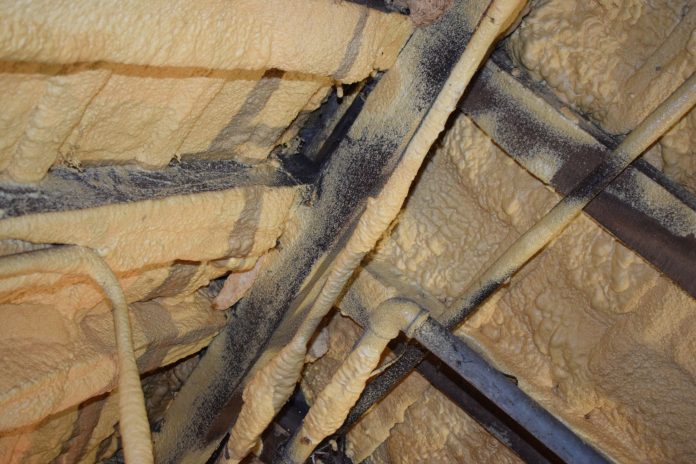A cross-party group has contributed to a defined course of action for the inspection of properties with sprayed foam roof insulation
The protocol represents a significant step forward in helping homeowners whose properties are hard to sell, or unacceptable for equity release lending, due to issues with the sprayed foam insulation.
Aimed at building professionals investigating spray polyurethane foam applied to the pitched elevations of domestic roofs, the content has been curated by a working group established by the Property Care Association and the Residential Property Surveyors Association.
Professionals consulted as part of the sprayed foam insulation inspection protocol includes surveying institutions, lenders, surveyors, legislators and product certification bodies, as well as insurance companies and the spray foam industry.
The open source document identifies key areas that surveyors should address
Areas of key interest include the recording of observations, knowledge, assumptions, and the evidence that should be gathered before informed opinions and conclusions can be delivered.
Process flow charts addressing two distinct application scenarios are also included, which set out how surveyors may move through the evaluation and recommendations that they provide.
A lack of regulation has led to poor standards in sprayed foam insulation
Stephen Hodgson, chief executive of the PCA, said: “This protocol meets the demands for a framework to assist property professionals and residential surveyors undertaking non-invasive visual inspections of spray foam applications to the inside of pitched roofs.
“It sets a framework for surveyors that allows informed decisions based on the condition and known risk factors appropriate to individual roofs and moves away from decisions based on it just being there.
“Spray foam insulation within domestic roof voids is something that continues to be sold and delivered with currently little regulation. The protocol is needed because the quality of work is currently so mixed.
“The challenge now is for surveyors to get to grips with this new protocol, and for quality assurance schemes to be introduced that prevent sharp practice, which would ultimately remove the necessity for the protocol in the first place.
“Many lending institutions, surveyors and property professionals, are rightly concerned about the risks of defects that can occur as a result of poorly installed or inappropriate sprayed foam.
Preventative action now will protect future investments
“Unfortunately, this uneasiness over sprayed foam may negatively affect people trying to sell or refinance their homes, even when the foam is correctly installed, but it should be remembered that the same policy will protect purchasers where the foam increases the chance of rot and dampness.
“We hope now that the lenders, insurers and surveyors involved in the creation of this new document use and adopt it.”
The protocol can be viewed here.














